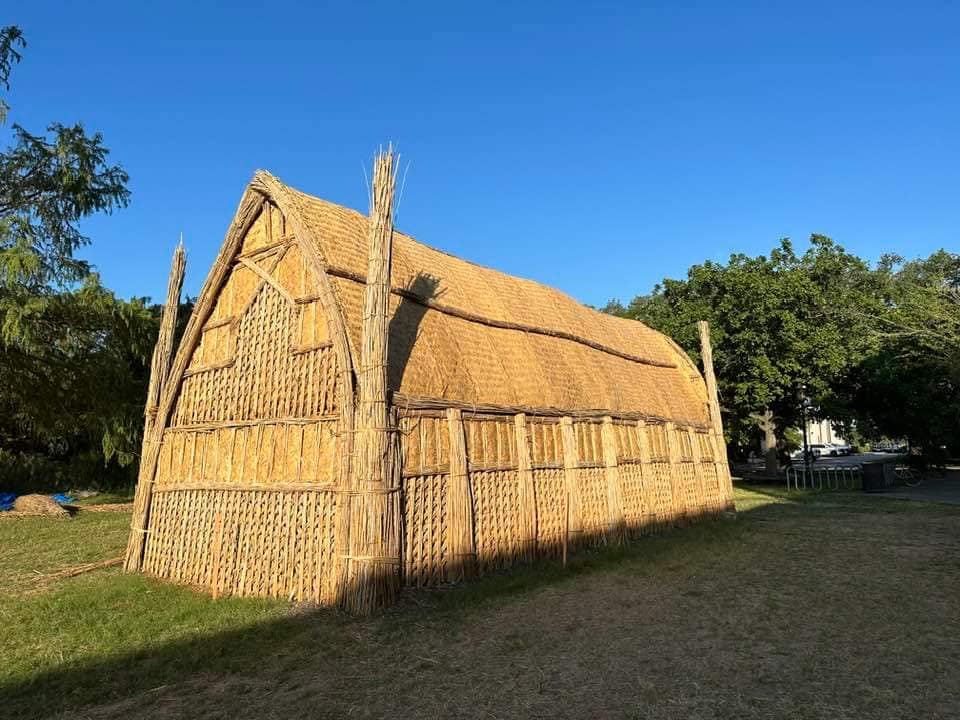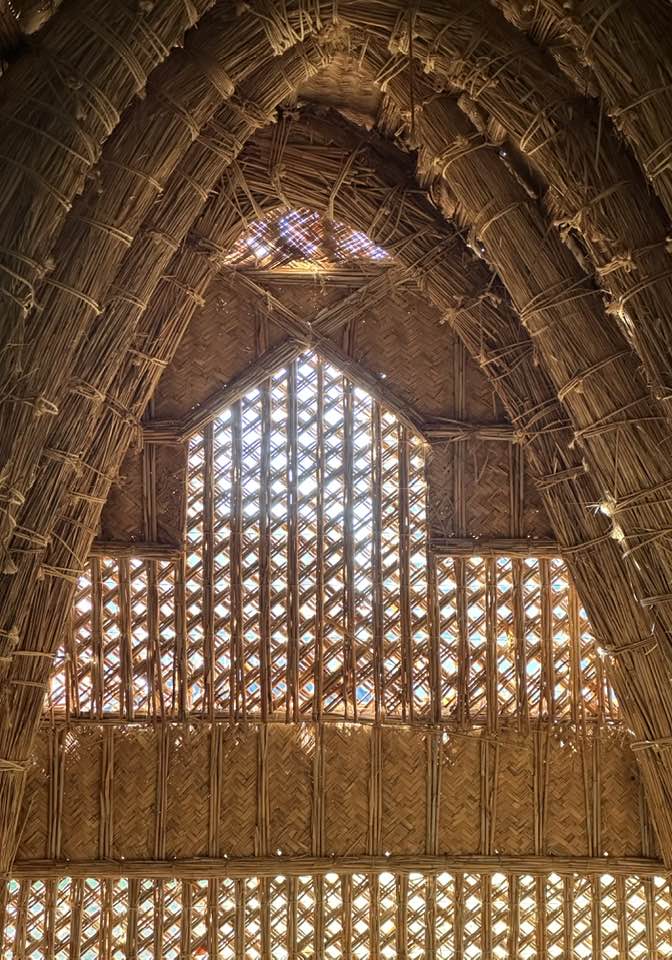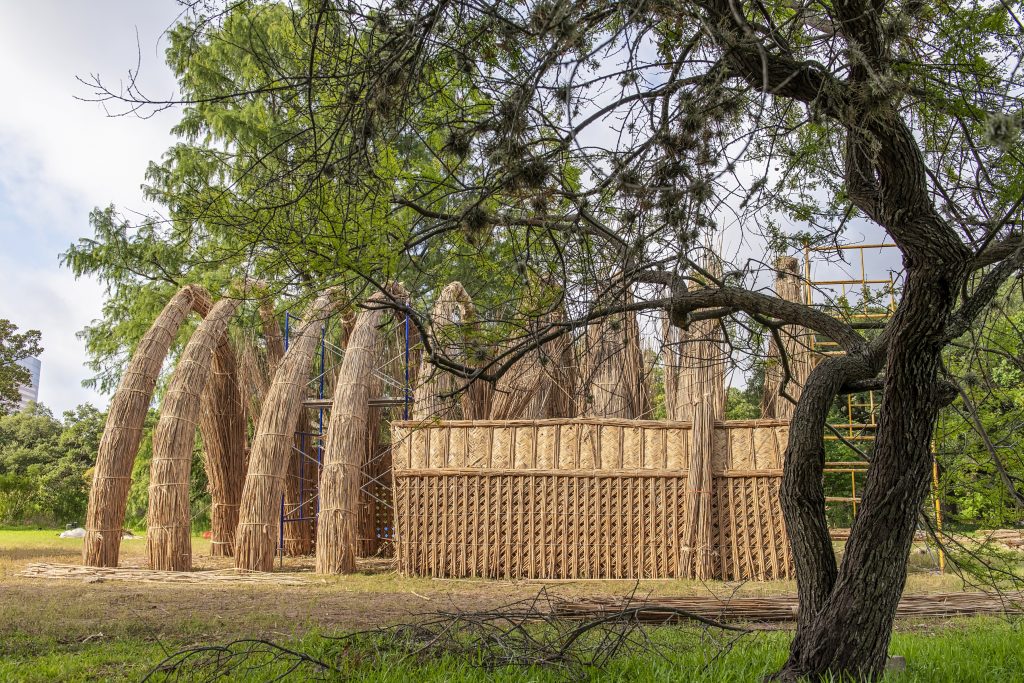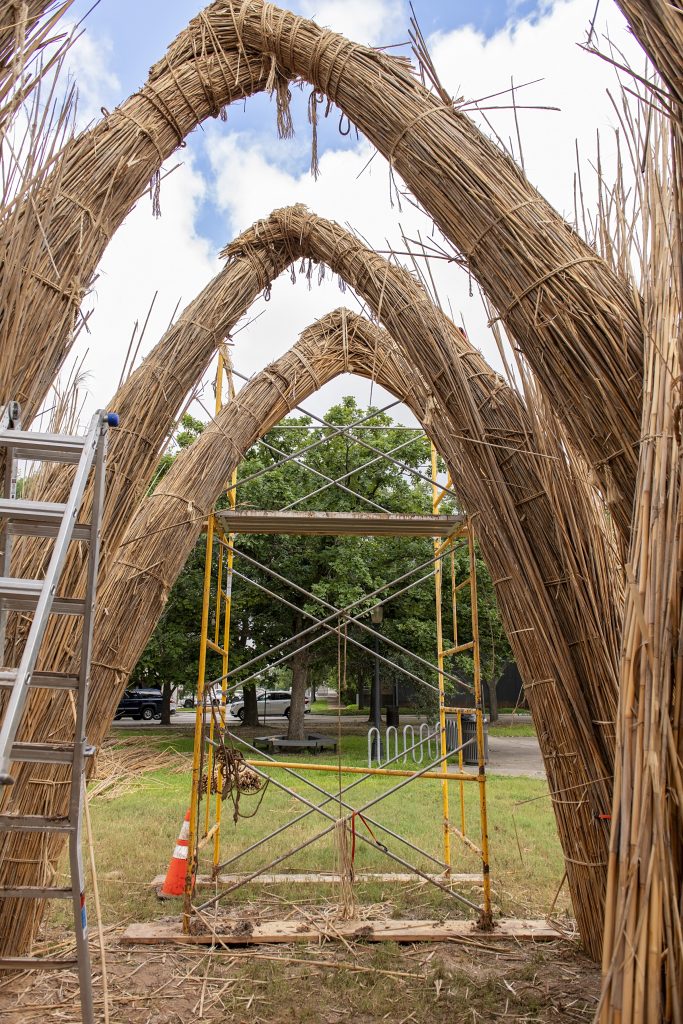August 28, 2023
by Gail Larsen Peterkin, Ph.D., Vice-President of AIA, Houston Society




Houstonians may have noticed a new addition to the city’s skyline, an authentic Marsh Arab reed mudhif taking shape on the campus of Rice University. To bring awareness to the rich cultural history of the Marsh Arabs, who have inhabited the marshes of the Tigris-Euphrates delta for generations, the Archaeological Institute of America, Houston Society (also known as Archaeology Now) and the Arab-American Educational Foundation collaborated on this ambitious project that was two years in the making and is hosted on the Rice University campus. There is also an important ecological link; the same Phragmites reeds used in Iraq’s salt marshes are found along Galveston Bay and in the Gulf Coast region.
The Marsh Arabs live adjacent to the marshes or on floating islands made of reeds, much like the Uros people on Lake Titicaca. Their residential structures and boats are constructed of reeds. The most important structure in a Marsh Arab village is the sheik’s mudhif, a large reed building used as a community center and guest house. Mudhifs have a long history, dating back over 5,000 years to ancient Sumeria. Sadly, Saddam Hussein’s government drained the marshes and displaced the Marsh Arabs in the final decade of the 20th century. Now, NGOs such as Nature Iraq are striving to bring water back to the marshes, and people are beginning to return to their time-tested way of life.
The Houston structure is only the second mudhif to be erected in the United States and the first that was done with reeds from the Iraqi marshes using traditional techniques. (A previous mudhif was built in Philadelphia, to reconcile the Iraqi community and Gulf War military veterans). A master builder, Meer Al Asadi, harvested the reeds from Iraqi marshes and constructed and wove all the components there, including columns for the arches, wall panels, roof mats, and reed bundles for struts and supports. Then, the separate pieces were loaded into a shipping container and hoisted onto a ship for transport to Houston. Unfortunately, the container took the “scenic route,” involving several ships, the Suez Canal, an onboard fire, and stops in Spain and South America, before finally arriving in the Port of Houston months behind schedule.
Customs released the shipment on June 8, which meant that construction commenced during an oppressive summer heat dome that stunned even Iraqi volunteers. Dr. Azzam Alwash, a hydraulic engineer and the founder of Nature Iraq, was the project coordinator and overseer; he has been involved in the construction of several mudhifs in Iraq. Volunteers provided manual labor for the project, including members of several local archaeological organizations and museums: Houston Archeological Society, Texas Archeological Society, Friends of Archaeology, Houston Museum of Natural Science Volunteer Guild and museum staff, and Archaeology Now. The Iraqi-American community in Houston enthusiastically embraced the project, and they came out in droves to assist with construction and plans for fall programming. They worked late into the nights to avoid the stifling heat, with inspiration from Iraqi music and cuisine. Who says manual labor can’t be fun?
When the structure is finished, the mudhif will be fully furnished, complete with traditional carpets and cushions. Archaeological programming will begin in September and continue through the fall. The grand opening celebration is scheduled for September 9, 2023, followed by educational programs and festive events for adults, families, and schools on both weekends and weekdays. It is anticipated that 1,000 students from the Houston area will tour the mudhif during the fall semester. Please visit the Archaeology Now website (archaeologynow.org) for all the details and for an updated schedule of lectures, culinary events, music, poetry, and dance.
The Marsh Arabs collaborative project is an excellent example of both experimental archaeology and of archaeological engagement with the local community. The involvement of Houston’s Iraqi and Arab communities has been inspiring, to say the least, and they are thrilled to have formal scientific recognition of their long history and vibrant cultural traditions.
The mudhif has been featured in local media: on the radio by Houston Matters and in articles by Houston Landing and Texas Monthly. It has even been on Iraqi TV and in an article in the official Iraqi newspaper, Al Sabaah. And that’s just the beginning!
International Archaeology Day Blog